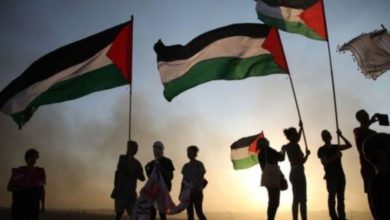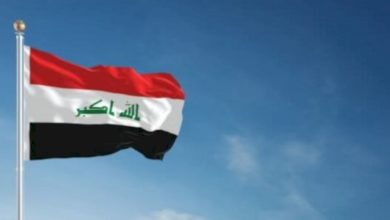Generation Z Protests in Madagascar

Prepared by the researche : Amr Rashad Ismail – Expert in African Affairs
DAC Democratic Arabic Center GmbH
In late September, Generation Z protests erupted in Madagascar and swept relentlessly through the capital, Antananarivo, and eight other cities—including Antsiranana, Mahajanga, Toliara, Antsirabe, and Toamasina—for more than 12 days. Sparked by electricity and water shortages, the demonstrations began peacefully but soon turned into violent clashes and an anti-government movement demanding, despite the dismissal of the government, the resignation of the president, and the dissolution of the National Assembly, the Senate, the Constitutional Court, and the Electoral Commission.
A new type of protest:
Since their outbreak on 25 September, Generation Z protests have been characterized as unique and distinct from previous demonstrations in Madagascar. These protests triggered unprecedented unrest since the country’s independence in 1960 and marked the largest wave of popular mobilization in over 15 years. They also represented the biggest challenge to President Andry Rajoelina’s administration since his re-election in 2023. Their uniqueness lies in their structure and leadership: unlike earlier movements, these protests were organized—similar to those in Nepal, Kenya, Bangladesh, and Indonesia—by Generation Z activists using social media platforms such as Facebook and TikTok. The youth organized independently, without political parties or traditional leaders, and drew inspiration from the pirate flag of the Japanese animated series One Piece.
Their distinct nature is also reflected in the profile of participants, who see themselves not as members of unions or parties but as a solution confronting a failing system. Their symbols and slogans are no longer partisan but popular and self-created. They reject partial reforms and operate outside traditional institutional frameworks, taking to the streets of cities nationwide. During the first 12 days of protests, demonstrators insisted on the president’s resignation despite his repeated offers to listen and propose solutions.
Public support:
Driven by frustration and digital mobilization, the protests gained wide support from artists, influencers, unions, associations, and ordinary citizens. Opposition leaders such as Siteny Randrianasoloniaiko and former president Marc Ravalomanana publicly endorsed the movement. The national labor union, representing about 50 syndicates, increased pressure on President Rajoelina and called for a general strike on 1 October. The union of employees of the national electricity and water company, JIRAMA, also announced a strike, while the Bar Association condemned human rights violations and demanded respect for the constitution and rule of law. By 3 October, the opposition platform Firaisankina joined the movement, and Rina Randriamasinoro, secretary-general of the TIM party and a member of parliament for the fourth district, became one of its main organizers, calling for mass mobilization and escalating pressure on the government.
International and regional concern:
The protests provoked international condemnation, concern, and calls for calm from global and regional actors. UN High Commissioner for Human Rights Volker Türk denounced the “unnecessary use of force” and urged swift investigations to ensure freedom of expression and peaceful assembly. Mahmoud Ali Youssouf, Chairperson of the African Union Commission, expressed regret over the unrest and called for restraint and dialogue. The Southern African Development Community urged all sides to remain calm and peaceful, while Pope Leon XIV issued an appeal for peace in Madagascar on 1 October. Embassies of Germany, South Korea, France, Japan, and the United Kingdom expressed deep sorrow over the violence and loss of life and urged all parties to exercise restraint.
Gradual and mixed government response:
In response, the Malagasy government adopted a combination of repression, appeasement, and symbolic concessions to contain the movement. Authorities initially banned gatherings and used rubber bullets and tear gas to disperse protesters. After fatalities and injuries occurred, President Rajoelina dismissed the Minister of Energy and Hydrocarbons, Olivier Jean Baptiste, on 26 September, holding him accountable for the crisis. On 29 September, he dissolved the entire government, apologized for its failures, and promised to open dialogue with the youth.
However, as protesters rejected these measures, the president on 3 October framed the unrest as part of a coup plot and warned of foreign interference. “No one benefits from the nation’s destruction,” he declared. “I am here, ready to listen and to help find solutions for Madagascar.” He claimed that certain politicians sought to exploit the protests and stage a coup while he was addressing the United Nations in New York. The Minister of Foreign Affairs echoed these claims, accusing “foreign entities” of conducting large-scale cyberattacks and digital manipulation campaigns aimed at destabilizing the country.
Accumulated and Catalyzing Factors
Contrary to the expectations of President Andry Rajoelina, the protests showed no signs of calming down. His statements, promises, and government reshuffles failed to convince the demonstrators or halt the movement. On the contrary, his measures deepened public anger. Many protesters viewed the president’s actions as merely symbolic and insufficient, dismissing his invitation for citizens to send applications for new ministerial posts as “mockery.” His speeches were described as “meaningless,” and demonstrators carried placards reading “Rajoelina Resign!” in Malagasy.
In reaction to the president’s refusal to take personal responsibility—dismissing only the government and apologizing on its behalf on September 29—the Generation Z movement declared, “We give the president 24 hours to respond positively to our demands.” They called for the dissolution of parliament, the replacement of Constitutional Court judges and electoral commission members, and the eradication of corruption. Following his speech on October 4, in which Rajoelina alleged foreign interference and conspiracies, the protesters described his address as “deeply disappointing.”
To understand the government’s failure to contain or de-escalate the protests, several root and driving causes can be identified:
Repeated Power and Water Outages
The chronic and prolonged blackouts and water shortages—lasting up to twelve hours a day—were the immediate spark of the protests. Initially, demonstrators gathered to denounce the deterioration of access to electricity and clean water, rallying in front of the National Water and Electricity Company (JIRAMA) offices. Their banners read: “Water and electricity are basic rights” and “Wake up, people of Madagascar!”
Observers of Madagascar’s infrastructure were not surprised. Only one-third of the population has access to electricity; 54.4% have access to basic water services, and merely 12.3% to adequate sanitation. Despite these severe deficiencies, the government has remained incapable of modernizing its aging infrastructure or addressing climate variability and funding shortages.
Rising Poverty and Deteriorating Living Conditions
The demonstrators’ slogans—especially “We want to live, not merely survive”—reflected the central role of poverty and worsening living conditions in fueling the movement. Despite Madagascar’s natural wealth and the government’s repeated promises of growth and development, citizens have seen little improvement.
According to World Bank statistics, about 75% of the population lives below the poverty line. GDP per capita declined from US$512 in 2008 to US$506 in 2025. Unemployment among youth aged 18–35 has reached roughly 42%, while 1.2 million people are suffering from severe food insecurity as of 2025. These figures have cemented public perception of an administration disconnected from citizens’ daily struggles.
Arrest of Municipal Council Members
Adding to the shrinking civic space and suppression of dissent, the arrest and detention on September 20 of two elected members of the Antananarivo Urban Council, Clémence Raharinirina and Alban Rakotoriesua, in the district of Analakely, inflamed tensions between authorities and the public. The arrests came one day after the councilors had organized a protest in front of the Senate in Anosy, denouncing the recurring blackouts and water shortages.
The detentions raised serious questions about their legality and motives, which many interpreted as an attempt to silence opposition voices and restrict civic freedoms. The incident fueled anger and resentment, accelerating the spread of the demonstrations across cities and social groups.
Endemic Corruption
Madagascar’s persistent corruption remains one of the key structural causes of the uprising. The country ranked 140th out of 180 nations in Transparency International’s 2024 Corruption Perceptions Index. Protesters accused the government of failing to deliver basic services, mismanaging natural resources and mining revenues, and allowing impunity for political and business elites.
The movement’s slogans—calling for the resignation of the president, the purging of the National Assembly, and the dissolution of the Senate, Constitutional Court, and Electoral Commission—reflect this outrage. Demonstrators also demanded the prosecution of businessman Mamy Ravatomanga, widely considered Rajoelina’s main financial backer. His house and properties were attacked by protesters, symbolizing popular anger toward the entrenched alliance between politics and wealth.
Fear of Constitutional Amendments and a Possible Third Term
Recently, unspoken signals have emerged suggesting that the ruling regime may be preparing the legal and political ground for a constitutional amendment allowing President Rajoelina to seek a third term. This would require altering Article 45 of the 2010 Constitution, which limits presidents to two terms.
Members of the ruling party have publicly hinted at such a possibility, claiming that “if the people wish, the constitution could be amended.” On September 13, 2025, Minister of Communication and Culture Volamiran’i Dona Mara denied these intentions, saying: “The president has never announced any plan to run for a third term. His agenda is focused on Madagascar’s development.”
Nevertheless, the opposition remains unconvinced. Figures such as Jean-Jacques Ratsitason, co-president of the Collective of Malagasy Citizens (Kolektiva An’i Malagasy), warned that “any attempt to revise the constitution would be a grave assault on the democratic principles of the nation.” Former minister Hajo Andrianainarivelo similarly rejected any “self-serving constitutional revision.”
These suspicions have poisoned the political climate, eroding trust between citizens and the regime, and have clearly energized the Generation Z protesters, who now see regime change—not cabinet reshuffles—as their ultimate goal.
The Unresolved Dispute over the “Scattered Islands”
Another factor undermining public confidence is the failure of Rajoelina’s administration to achieve progress in resolving the sovereignty dispute with France over the Scattered Islands—Glorieuses, Juan de Nova, Europa, and Bassas da India—which France has controlled since colonial times.
Although Rajoelina promised during his 2018 campaign to restore these territories, the issue remains unresolved. France continues to reject any transfer of sovereignty, offering only cooperation in environmental and maritime research. This stalemate has eroded the president’s nationalist image. Opposition figures portray him as submissive to France, even accusing him of acting as “a French citizen loyal to Paris.” The issue has thus become a symbolic grievance, feeding the nationalist dimension of the current protests.
Illegal Mining and Foreign Control
Despite possessing vast mineral reserves—including nickel, cobalt, gold, sapphire, titanium, chrome, bauxite, and graphite—estimated at nearly US$800 billion, Madagascar’s government has failed to establish effective governance and oversight over the mining sector. Foreign companies dominate extraction, reaping enormous profits while local communities suffer environmental degradation and economic marginalization.
The Toliara Project, in the island’s southwest, exemplifies this imbalance. Foreign operators plan to extract ilmenite, rutile, zircon, and monazite over 38 years, largely to supply Western industries with critical minerals—without due regard for environmental or social consequences. The project threatens the Mikea forest, as well as the livelihoods of farmers, fishermen, and herders.
Illegal gold mining has also expanded dramatically, with estimates suggesting that one ton of gold leaves the country illegally each month, depriving Madagascar of tax revenues equal to a significant portion of its national budget. These activities deepen inequality, weaken institutions, and sustain the impoverishment that Generation Z protesters have denounced.
Influence of Generation Z Movements Abroad
Analysts widely agree that Madagascar’s uprising was inspired by the wave of Generation Z–led protests that have recently swept other countries, including in Africa. These cross-border movements provided a model and a source of motivation for Malagasy youth seeking to demand accountability and change.
In Nepal, protests forced the prime minister’s resignation, while in Kenya, mass youth demonstrations in June and July 2024 compelled the government to withdraw controversial tax laws. Malagasy protesters themselves acknowledged this influence, stating: “After what happened in Nepal, young people truly believe their voices can make a difference. We don’t have to accept the status quo—we can shape our own future.”
This transnational inspiration is visible in the symbols and aesthetics of the Malagasy movement: many protesters carried flags bearing the skull-and-bones motif from the anime One Piece, expressing defiance and unity under a globalized youth culture of protest.
Immediate Impacts and Outcomes:
Observers note that beyond their scale and distinctive nature, the Generation Z protests in Madagascar have produced several immediate repercussions, summarized as follows:
- The President’s Apology and Acknowledgment of Demands
The protests pushed President Andry Rajoelina to express understanding and sympathy toward demonstrators’ grievances, apologizing on behalf of his government and admitting that many citizens’ needs and expectations had not been adequately met. He pledged measures to support businesses affected by recent looting, including interest-free bank loans to maintain liquidity, special subsidies for damaged enterprises, and tax exemptions. On 29 September, he declared:
“I have heard your voices and your demands… We recognize and apologize if members of the government failed to fulfill their duties… I understand the anger, the pain, and the hardships caused by power cuts and water shortages. I have heard your call and felt your suffering.”
Notably, protesters had explicitly demanded such an apology on 28 September—one day after the energy minister’s dismissal—calling for a public acknowledgment from the president and prime minister within 24 hours, as well as an explanation for the violence against peaceful demonstrators. However, many viewed the president’s apology as an attempt to evade responsibility and offer partial concessions by limiting accountability to the government’s resignation.
- Dismissal of Prime Minister Christian Ntsay’s Government
The protests forced the president to dismiss his cabinet in an effort to appease public anger. On 26 September, after at least five people were killed, he dismissed the Minister of Energy and Hydrocarbons, Olivier Jean Baptiste, and promised rapid reforms, better care for riot victims, and direct dialogue with youth—who are at the forefront of the movement. He also vowed to counter any attempts at destabilization. On 29 September, he dissolved the government entirely, invited applications for ministerial posts, and gave himself a three-day window to appoint a new prime minister. - Social Unrest and Violence
The demonstrations triggered what analysts have called the latest wave of unrest since Madagascar’s independence. Security forces used force to disperse gatherings, turning peaceful protests into violent confrontations. In Antananarivo, barricades were erected, cars were burned, and shops, banks, and supermarkets were looted. Fires were set at cable car stations in Anosizato, Anosy, Ankorondrano, and Ivandry, while homes of pro-government politicians and MPs—including Latiana Rakotondrazafy, Andry Ratsevini, and Ranaivo Raholdina—were also attacked. - Human Casualties
According to the UN High Commissioner for Human Rights, at least 22 people were killed and over 100 injured as a result of excessive force by security and gendarmerie units using rubber bullets, tear gas, and live ammunition. The Ministry of Foreign Affairs of Madagascar, however, denied these figures, calling them “rumors and misinformation.” - Economic Losses
The unrest prompted curfews and widespread shutdowns of shops, markets, schools, and fuel stations for several days, causing shortages of goods, inflation, and economic paralysis. In early October, the Ministry of Industry and Trade estimated losses from looting at over 187 billion Ariary, affecting 94 operators and 2,213 jobs. Analamanga was the hardest-hit region with losses of 177.6 billion Ariary, followed by Vakinankaratra (7.5 billion) and Boeny (1.2 billion).
Potential Transformations:
With protesters continuing to demand the president’s resignation—something he clearly rejects—Rajoelina has sought to portray the unrest as a foreign-backed conspiracy. On 4 October, he claimed that “organizations, countries, and agencies” were funding the protests to orchestrate an illegal seizure of power, bypassing democratic elections, and placing Madagascar’s mineral wealth under foreign exploitation.
- Decline in Presidential Popularity
The Generation Z movement has transformed Rajoelina’s image—from a popular leader who rose to power through the 2009 protests that ousted Marc Ravalomanana, to a president now facing calls for his removal. The demonstrations mark the most serious challenge of his presidency and reflect a steady erosion of his popularity since the disputed 2023 elections, boycotted by 10 of 13 opposition candidates over dual-nationality concerns. Ignoring these public demands risks deepening mistrust between the government and citizens. Protesters’ responses to his speeches confirm this sentiment: after his remarks on “foreign interference,” Generation Z groups stated, “Your speech disappointed us once again because you blame the very people you claim to invite for dialogue.” - Possible National Dialogue Mediated by Religious Leaders
Amid the turmoil, Madagascar’s Christian churches have sought once again to play a mediating role. During the first 10 days of the protests, both the Council of Christian Churches and the Conference of Bishops issued separate statements urging an end to violence and the opening of sincere dialogue between citizens and authorities. On 3 October, the Council (FFKM) hinted at its readiness to mediate national discussions to resolve the crisis and address water, electricity, and security challenges. Religious leaders remain among the few credible intermediaries capable of facilitating a national dialogue. - Escalating Violence and Polarization
The protests show no signs of subsiding, driven by public frustration with the government’s dismissive approach and superficial concessions. Madagascar now risks descending into parallel demonstrations by both opponents and supporters of the regime—especially in Antananarivo. While opposition groups plan to expand protests, pro-government factions are mobilizing counter-rallies, as seen on 3 October under slogans like “Let the President Work,” “No to Strikes,” and “No to Coups.” This polarization could further inflame violence and confrontations until a definitive settlement is reached—a prospect that remains uncertain as of early October. - Delayed Government Formation
The crisis has paralyzed Madagascar’s political system. Despite promises to appoint a new cabinet by 2 October, political deadlock and lack of consensus have delayed the process. The outgoing government continues to handle day-to-day affairs, but as of 7 October, no substantive talks or negotiations had been held between the regime and protesters.
Conclusion:
As of 7 October 2025, the ongoing Generation Z protests—initially triggered by chronic power and water shortages—have exposed deep-rooted political, economic, and social grievances. Whether they succeed in toppling the regime or not, they have ushered Madagascar into a new phase of political expression dominated by youth activism. Generation Z has emerged as a powerful social force—more capable than the ruling elite of mobilizing unions, artists, and civil society, and compelling the president to dismiss his government and open dialogue.
Yet, given the government’s reluctance to meet protester demands, the president’s framing of the unrest as a foreign conspiracy, and the continued delay in forming a new government, Madagascar now faces a near-term future of political uncertainty, social unrest, and economic instability. The country’s stability will depend on the ability of political actors to agree on a credible roadmap for reconciliation and reform




